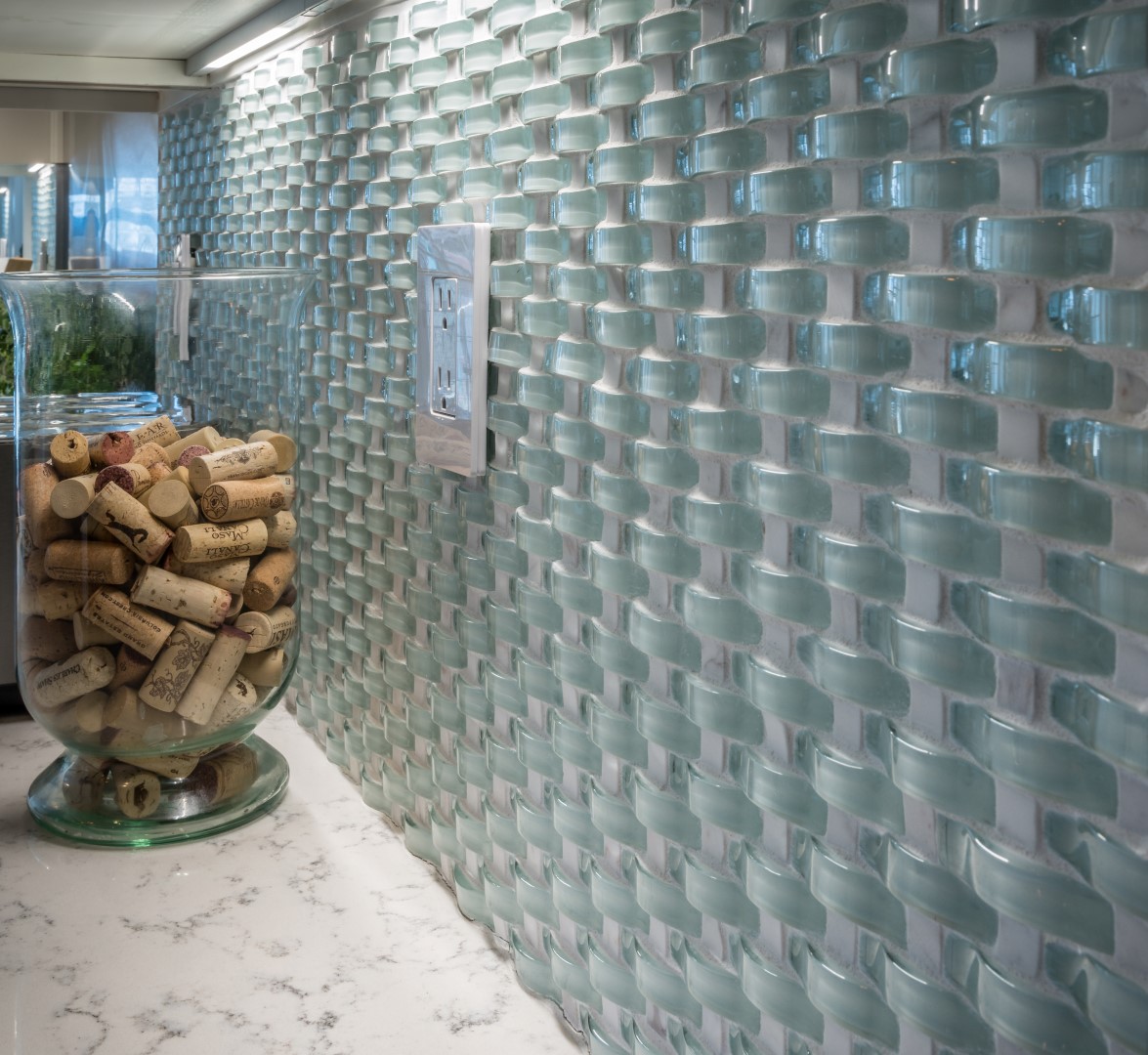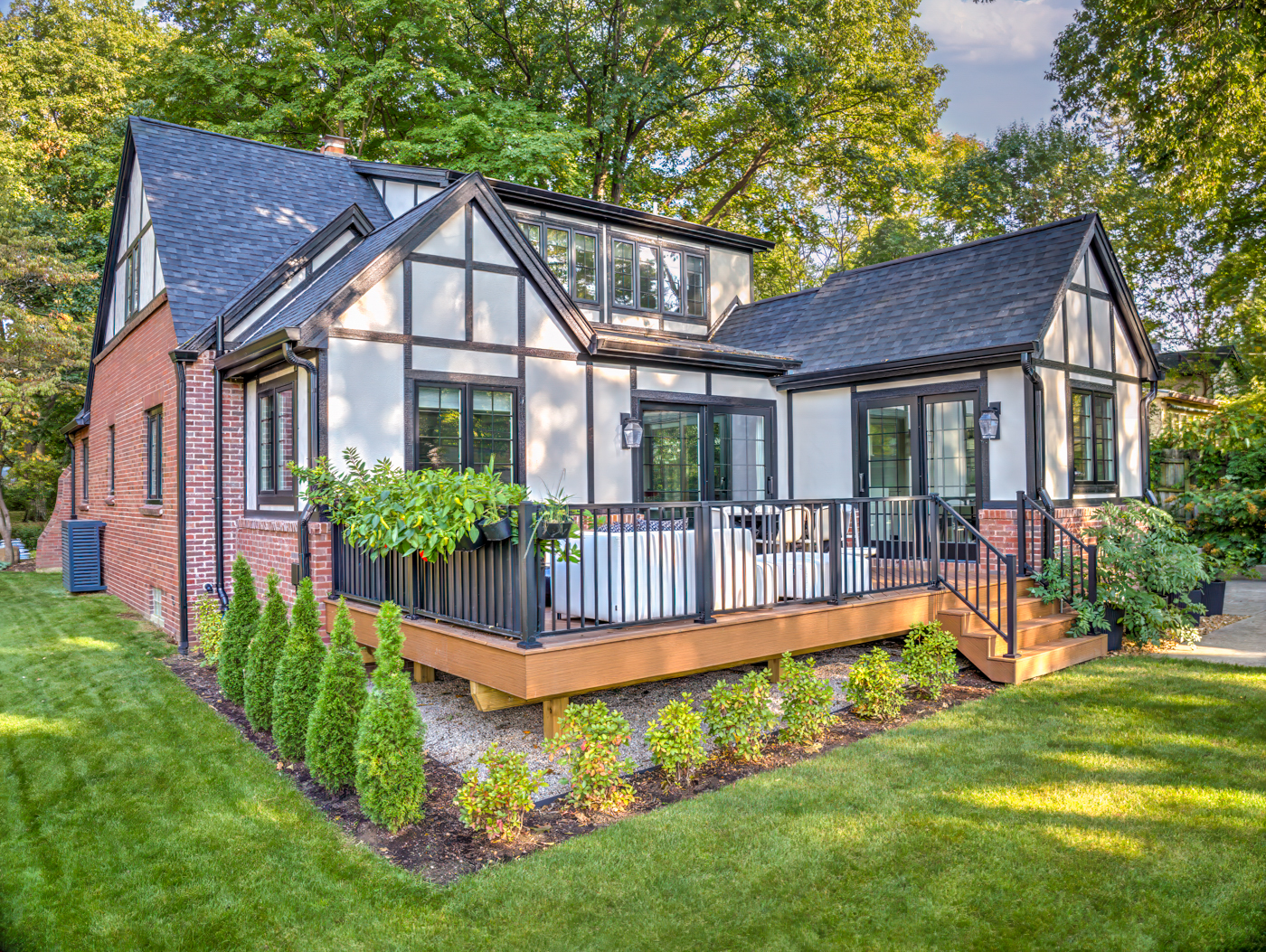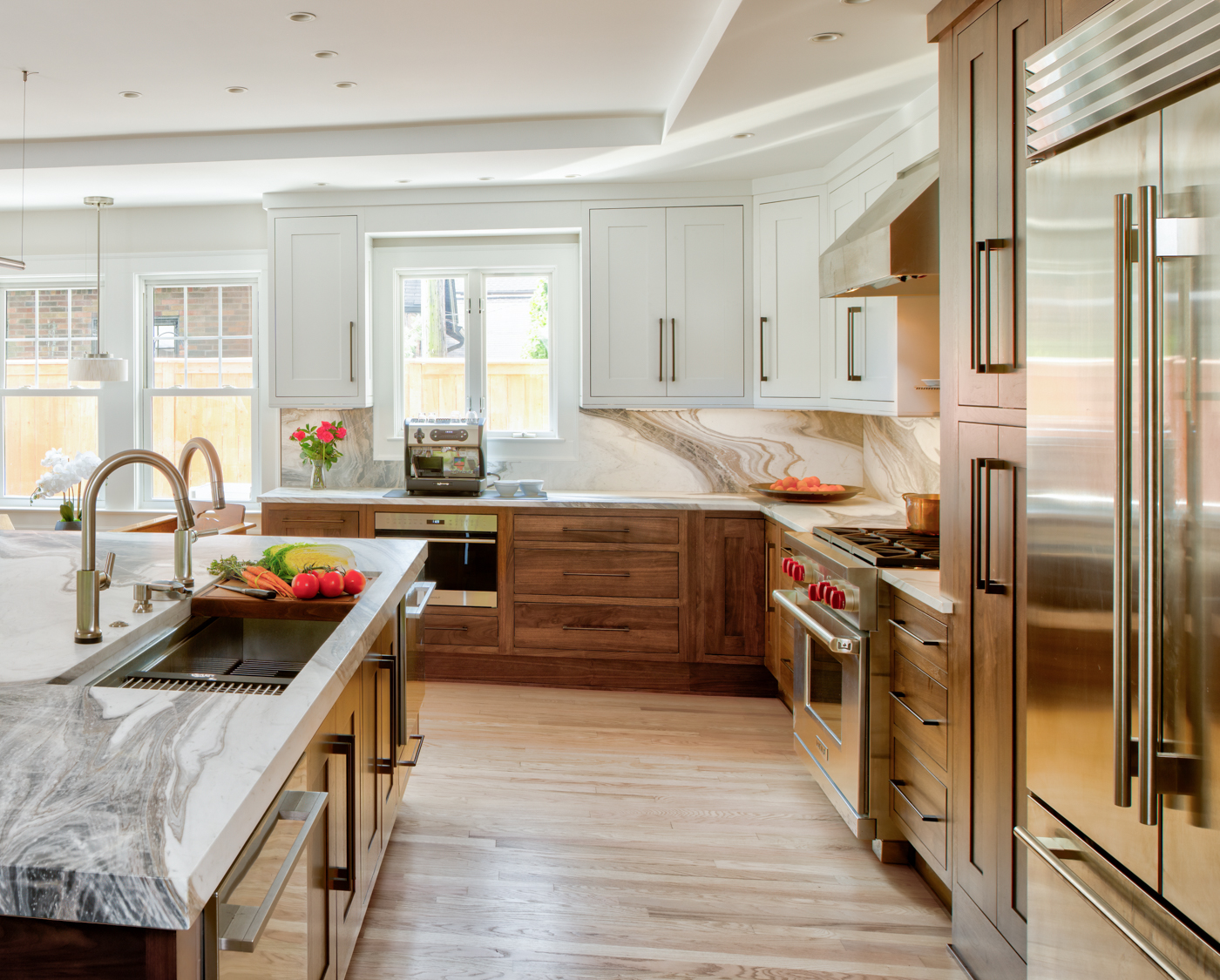As a remodeling company, we’re constantly examining the best products and prices for our home improvement projects. Kitchen and bathroom tiles are one building material customers often ask about.
What’s the difference between a $1 tile and a $10 tile? Well, it depends on what matters most to you. Yes, there are affordable options that look nice, but for high-end home remodels it’s best to spend a little more to get a custom look that’s sure to impress.
Tile plays a central role when designing a new kitchen or bathroom. The colors, patterns, finish and type of tile material set the tone for the entire space.
Here’s a breakdown of tile features we suggest homeowners consider when selecting the perfect kitchen backsplash or bathroom wall tiles. These factors often apply to floor tile as well, but there are other elements like durability and slipperiness to consider when choosing flooring.
Appearance

The arabesque tile made from natural stone Carrara marble comes in 12-inch-by-12-inch mosaic sheets.
The unique appearance of certain tile products increases the price you’ll pay for materials. Tiles come with a variation rating, ranging from V1 to V4, to indicate how much visible difference there is from tile to tile. A V1 rating means there’s no variation and every tile looks the same, while tiles rated with V3 and V4 exhibit a high level of variation and a typically higher price point.
Tiles made from natural materials and those designed to mimic slate or wood tend to show more variation, which gives them a more organic look that our clients often find attractive. Repetition of distinct patterns also plays into the cost. Tiles that all feature the same pattern will be cheaper than tile patterns that don’t repeat very often in the design.
Material & Manufacturing

This high-end, glazed ceramic tile in an arabesque shape is sold as individual tiles, with each tile custom made.
Two of the biggest factors when pricing tiles include the type of material and how they’re made. Much like countertops or flooring, products made from natural stone cost more than man-made materials. These materials are harder to source than common clay products and are more difficult to cut for both the manufacturer and contractor.
Many upscale tile products feature a beautiful polish or hand-glaze that gives the design a sophisticated feel, and makes the walls easier to clean and moisture resistant — an important factor in kitchens and bathrooms.
The luxurious look of marble and glass tiles add elegance, reflecting light and other colors in the room to create an impressive effect, but these materials cost more to manufacture than a basic square ceramic tile.
Glazed ceramic or porcelain wall tiles are typically the most affordable tile options, but the price can go up if you choose a unique shape or custom-made tiles. That’s true no matter what tile material you pick. Our clients tend to love the distinct look of hex, penny, arabesque or basket-weave shapes that bring a certain flair to the space.
Labor and Availability
Always factor in installation costs when finding the perfect tile for your budget. The cost to install wall tiles varies by how much labor is involved, such as how hard it is to grout or applying individual tiles versus mosaic mesh sheets.
We recently installed a tile product that weaved natural marble and glass to create a dimensional and stunning kitchen backsplash. While the tile itself cost less per square foot than some other marble or custom products we’ve used on projects, it was much more time consuming to grout and therefore required additional labor.
A remodeler and designer must work together to make sure tiles with a lot of variation or specific pattern get spaced properly. We also spend more time on tiling jobs that require us to match up complicated tile patterns so it looks like one cohesive wall covering.
Individual tiles require more materials, more grouting work and more design planning than most mosaics sold on a large mesh sheet, adding to the labor cost. However, mosaic products made with expensive materials or ones that feature a specialized design cost more than regular tiles. And don’t neglect to add sealant to natural stone tiles and mosaics. Tile sealant will help maintain a clean backsplash, and it protects the stone from stains when food splatters on the surface.

This glass tile backsplash with natural marble mixed in costs $15 to $20 per square foot, including tax.
Custom-made tiles offer a one-of-a-kind result, but cost more to make and ship, and take longer to get than those available nearby in large quantities. If you live in a historic home with a lot of character, why pick a standard tile that anyone can buy at a local home improvement store? Custom tiles are a great way to ensure a new kitchen or bathroom melds seamlessly into the home’s overall design.
One homeowner who hired CCG for a kitchen remodel selected custom-glazed ceramic tiles, which took six weeks to receive instead of the typical two- to three-week turnaround for backsplash tiles. The remarkable results made the extra time and expense worth it, but required good planning on our part to make sure the additional production time didn’t negatively impact the project’s progress or timeline.
You Get What You Pay For
A high-quality tile costs more than average because it’s made from expensive materials, looks better, and often offers better durability and easier maintenance. Always factor in the cost of contractor labor and shipping before selecting tile for your kitchen or bathroom renovation.
Tap into the resources, experience and building expertise of Central Construction Group for personalized guidance on tile selection and quality installation.







